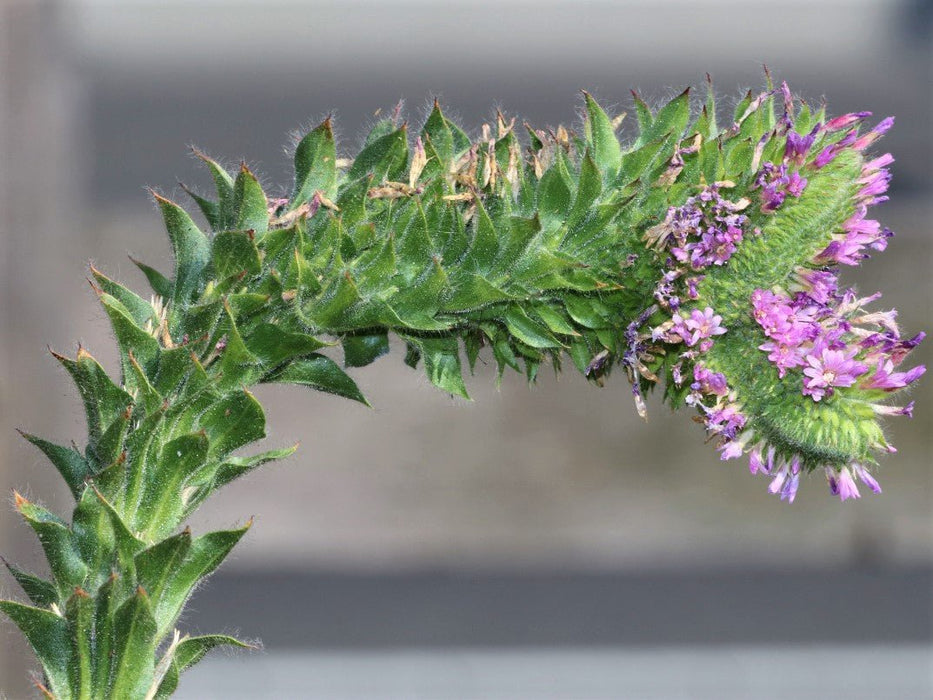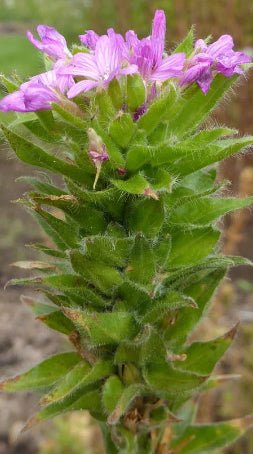
Spike Primrose Seeds (Epilobium densiflorum)
A great colonizer for disturbed sites, rain gardens, and seasonally flooded spots!
Also known as denseflower willowherb, this annual relative of fireweed and clarkia is native from British Columbia to California. Typically found in locations with seasonally wet soils saturated by winter rain, spike primrose is well adapted for rapid growth as those spots dry out in summer.
This interesting plant blooms from July to September (making it a nice complement to spring-blooming wildflowers), with multiple side branching flowerheads, all of which end in a tight cluster of small flowers that open in succession. The effect is not one of a great big flower show, but rather a constant opening and closing of numerous small flowers, with the largest flowerhead at the uppermost stem. The plant itself usually reaches about two to three feet in height, with a primary upright green-grey stem, and the entire plant is covered with soft fine hairs that we’ve seen being collected by wool carder bees (Anthidium sp.) for use as a nesting material. Additionally, like other members of its plant family, spike primrose is a hostplant for the hummingbird-like bedstraw hawkmoth (Hyles gallii).
As a fast growing annual species adapted to fire and disturbance, we like this rapid colonizer for integrating into sparse grassy meadows, areas recently cleared for construction, wet ditches, rain gardens, and bioswales.
Approximately 1000 seeds (1.0 grams).


